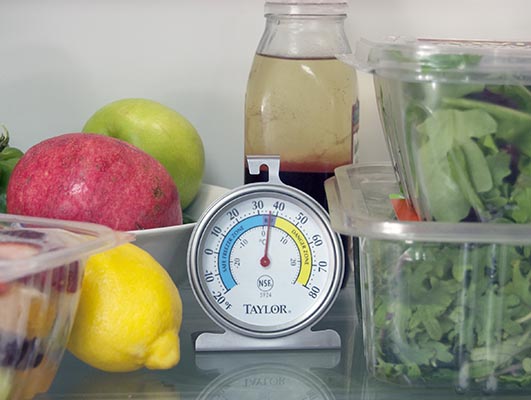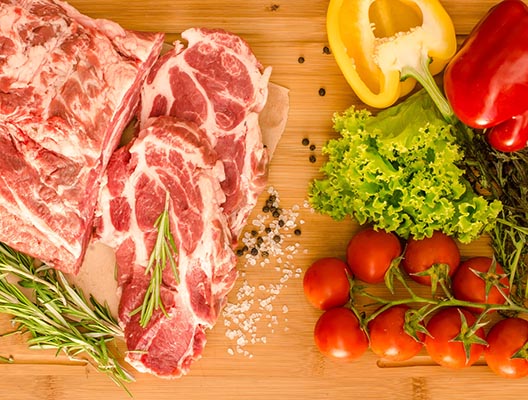Kitchen gadgets that can help you avoid food poisoning
Salmonella. Campylobacter. Toxoplasma. Vibrio. Listeria. E. coli. The list of microbes that can cause food poisoning—and its possible long-term consequences—is daunting. These kitchen gadgets and tools can help keep food safe.
A digital food thermometer
“Get a tip-sensitive digital thermometer that can tell you the temperature of cooked meat almost instantly,” says Donald Schaffner, an extension specialist in food science and a professor in the School of Environmental and Biological Sciences at Rutgers University. “It’s a small price to pay to keep you and your family safe, because you can’t always tell by looking whether meat or poultry has been cooked to a safe temperature.”
You can use the same thermometer to check food that’s delivered to your home by cook-your-own meal-kit companies like Blue Apron.
“If it’s food that should be kept cold, press the tip of the digital thermometer firmly onto the surface of the package in a couple of different places without puncturing the package,” Schaffner suggests.
“It should read no warmer than 40°F or 45°F. If it’s 60°F or 70°F, you’ve got a problem.”
A thermometer for your refrigerator
Knowing your refrigerator’s temperature is also critical. “If you ask some people how cold their refrigerator is, they’ll say it’s on the number 2 setting, which is useless,” says Schaffner.

Your best bet: an inexpensive old-style thermometer (like the one in the photo). “You don’t want something so sensitive that it reacts whenever you open the refrigerator door,” says Schaffner.
Your refrigerator’s temperature should be no greater than around 40°F to keep food fresh and prevent most pathogens from growing. “Some day all refrigerators will have a thermometer built in,” says Schaffner.
Which cutting boards are best?
“Wood, plastic, and stone cutting boards all have their advantages and their drawbacks,” says Ben Chapman, an associate professor and food safety extension specialist at North Carolina State University.
For example, plastic boards are easier to sanitize because you can put them in the dishwasher. But over time, your knife can create grooves where bacteria can hide.
Wood is tougher to sanitize but doesn’t scratch as much...if it’s a hardwood.
“Hard woods, like maple, are fine-grained, and the capillary action of those grains pulls down fluid, trapping the bacteria, which are killed off as the board dries after cleaning,” says Chapman.
“Bamboo is dense, durable, and resistant to water, so it’s also a good choice. Soft woods, like cypress, pose a greater risk because their larger grains allow the wood to split apart more easily, forming grooves where bacteria can thrive.”
Chapman suggests plastic for meat, fish, and poultry, and wood for fruit, vegetables, bread, and cheese. But either can work. “As long as you wash your boards with soap and water and dry them, it doesn’t matter which you use,” he says.
Drying is key. A wet board can be a breeding ground for pathogens.
And never put raw meat and fresh veggies on the same cutting board.

Should you re-wash bagged salad greens?
Another danger zone: washed, prebagged salad greens that you wash again.
“Re-washing bagged salad is not a good idea,” Chapman says. “You are more likely to contaminate the lettuce with bugs from your kitchen than you are to make the greens any safer to eat.”
Got questions about cooking, thawing, storing, and more? Go to foodsafety.gov.
Photos: Jorge Bach/CSPI (thermometer), © breamchub/fotolia.com (cutting board).
Continue reading this article with a NutritionAction subscription
Already a subscriber? Log in

